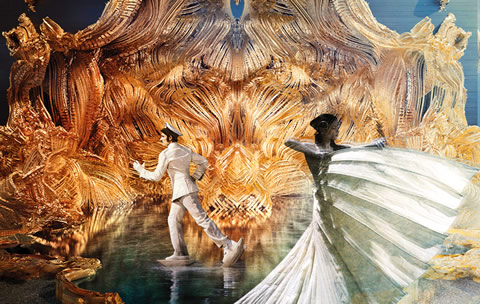This shimmering and intricate structure, designed by U of T architecture professor Benjamin Dillenburger, was a finalist in this year’s Young Architects Program, an international contest hosted annually by the Museum of Modern Art’s PS1 gallery in New York.
Apart from its arresting appearance, what’s unusual about Dillenburger’s design – conceived as a small stage and fountain for PS1’s summer music festival – is how he intended to build it. The highly ornamented surface was designed entirely on computer, and is far too complex to be manufactured by traditional means. So a computer-guided mill would cut the intricate shapes into flat wood panels, which would then be stacked like 3D-printed layers for assembly on-site. Painted gold, the whole structure, he imagined, would glow and shimmer from the interplay of water and light.
His design didn’t win the competition, but it serves as a telling indicator of how computer technology could revolutionize architecture. “Our goal is to create a level of detail that is almost impossible to imagine and certainly impossible to draw manually,” he says.
Dillenburger’s innovative approach extends to the materials he uses. In a studio at the Daniels Faculty sits a footstool-sized block that he has 3D-printed out of sand with a highly intricate, organic-looking design – a bit like a coral reef or a crustacean’s shell. As with the wood panels, these sandstone blocks can be stacked to create highly unusual, playful spaces.
These 3D-printing techniques are not yet being used in large-scale commercial buildings, but Dillenburger is confident that eventually they will. “The way we build hasn’t changed much over the years. There’s a lot of space to explore.”
Watch a demonstration of how Prof. Benjamin Dillenburger uses 3D printing to build impossibly intricate structures
Digital Grotesque . Printing Architecture from Digital Grotesque on Vimeo.






